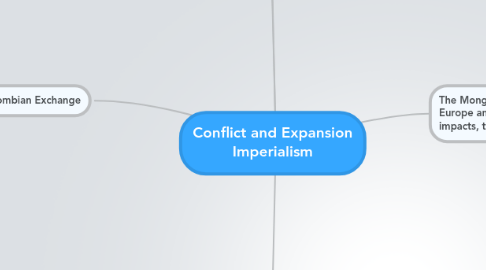
1. Impacts and Issues
1.1. One Political unit? The Mongol invasion of Central Asia occurred after the unification of the Mongol and Turkic tribes on the Mongolian plateau in 1206. It finally completed when Genghis Khan conquered the Khwarizmian Empire in 1221.
1.2. Yam System
1.3. Tolerance of Other Religions: Their belief in Shamanism notwithstanding, the Mongols determined early on that aggressive imposition of their native religion on their subjects would be counter-productive. Instead, they sought to ingratiate themselves with the leading foreign clerics in order to facilitate governance of the newly subjugated territories.
1.4. The Mongols and Black Death The Mongols were responsible for the spread of this deadly epidemic. However, the Mongols themselves were not exempt from the adverse effects of this disease. In fact, this disease would play a significant role in the downfall of the greatest land empire in history. Furthermore, Black Death was a leading cause in the rise of Western Europe as a world power; a rise that would not have taken place if the Mongols had not spared this region of Eurasia.
2. Ming Trading with Europe
2.1. European desire to trade with Mings- Europeans wanted to trade, but the Chinese did not want inferior European trade goods. They believed that they didn't need anything that the European's had. They thought that they were a superior civilization than the European's and didn't want them to change the thoughts of the Ming dynasty's lower class people.
2.2. Impact of the Ending Mongol Influence
2.3. The Role of Junk Ships
3. Rise of the Ottoman Empire
3.1. Why did Islam help? Because of the consequent of Constantinople and the conquest of Arab regions of the Middle East.
3.2. Role of Sultans- The Sultan was to be a devout Muslim and was given the literal authority of the Caliph (the highest position).
3.3. Role of Ottoman Tolerance: Ottoman ruling policy, it was not trying to assimilate people to become Turkish, the state's primary responsibility was to defend and extend the land and to ensure security and harmony within its borders and collect tax.
4. The Colombian Exchange
4.1. How did this promote ideas of Old World vs. New World?
4.1.1. Because, the New World seemed "better" since they had so much to exchange. You could see a difference in refinement.
4.2. Exchange of Disease
4.2.1. Old World to New World:
4.2.2. bubonic plague
4.2.2.1. Old World to the New World
4.2.3. chicken pox
4.2.4. cholera
4.2.5. common cold
4.2.6. diphtheria
4.2.7. influenza
4.2.8. leprosy
4.2.9. malaria
4.2.10. measles
4.2.11. scarlet fever
4.2.12. smallpox
4.2.13. typhoid
4.2.14. typhus
4.2.15. whooping cough
4.2.16. yellow fever
4.2.17. yaws
4.2.18. bejel
4.2.18.1. New World to the Old World
4.2.19. Chagas disease
4.2.20. pinta
4.2.21. syphilis
4.3. Exchange of animals
4.3.1. cat (domestic)
4.3.1.1. Old World to the New World
4.3.2. camel
4.3.3. chicken
4.3.4. cow
4.3.5. donkey
4.3.6. ferret
4.3.7. goat (domestic)
4.3.8. goose (domestic )
4.3.9. honey bee
4.3.10. horse
4.3.11. rabbit (domestic)
4.3.12. pig
4.3.13. rats
4.3.14. rock pigeon
4.3.15. sheep (domestic)
4.3.16. silkworm
4.3.17. water buffalo
4.3.18. guineafowl
4.3.19. alpaca
4.3.19.1. New World to the Old World
4.3.20. American Mink (fur farming)
4.3.21. guinea pig
4.3.22. llama
4.3.23. Muscovy Duck
4.3.24. turkey
4.4. Exchange of Plants
4.4.1. ackee
4.4.1.1. Old World to the New World
4.4.2. almond
4.4.3. apple
4.4.4. apricot
4.4.5. artichoke
4.4.6. asparagus
4.4.7. banana
4.4.8. barley
4.4.9. beet
4.4.10. bilberry ("blueberry", "blaeberry")
4.4.11. bitter melon
4.4.12. black pepper
4.4.13. Brassica oleracea-derived vegetables
4.4.14. kale and collard greens
4.4.15. broccoli
4.4.16. cabbage
4.4.17. brussels sprouts
4.4.18. cauliflower
4.4.19. cantaloupe
4.4.20. carambola
4.4.21. cardamom
4.4.22. carrot
4.4.23. cinnamon
4.4.24. clove
4.4.25. coffee
4.4.26. citrus (orange, lemon, etc.)
4.4.27. cucumber
4.4.28. date palm
4.4.29. fig
4.4.30. flax
4.4.31. garlic
4.4.32. grape (fox grape and other species used as rootstocks)
4.4.33. hazelnut
4.4.34. hemp (including cannabis/marijuana)
4.4.35. kiwifruit
4.4.36. kola nut
4.4.37. lettuce
4.4.38. mango
4.4.39. Melissa
4.4.40. millet
4.4.41. nutmeg
4.4.42. oats
4.4.43. okra
4.4.44. olive
4.4.45. onion
4.4.46. opium
4.4.47. peach
4.4.48. pea
4.4.49. pear
4.4.50. pistachio
4.4.51. radish
4.4.52. rhubarb
4.4.53. rice
4.4.54. rye
4.4.55. soybean
4.4.56. sugarcane
4.4.57. taro
4.4.58. tea
4.4.59. turnip
4.4.60. wheat
4.4.61. walnut (English)
4.4.62. watermelon
4.4.63. Wine grape
4.4.64. yam (sometimes misnamed "sweet potato")
4.4.64.1. New World to the Old World
4.4.64.1.1. agave
4.4.64.1.2. amaranth (as grain)
4.4.64.1.3. arrowroot
4.4.64.1.4. avocado
4.4.64.1.5. common beans (pinto, lima, kidney, etc.)
4.4.64.1.6. black raspberry
4.4.64.1.7. bell pepper
4.4.64.1.8. blueberry (not to be confused with bilberry, also called blueberry)
4.4.64.1.9. canistel
4.4.64.1.10. cashew
4.4.64.1.11. chia
4.4.64.1.12. chicle
4.4.64.1.13. chirimoya
4.4.64.1.14. chili peppers
4.4.64.1.15. cranberries (large cranberry, or bearberry species)
4.4.64.1.16. coca
4.4.64.1.17. cocoa
4.4.64.1.18. cotton (long staple species)
4.4.64.1.19. custard apple
4.4.64.1.20. guava (common)
4.4.64.1.21. huckleberry
4.4.64.1.22. Jerusalem artichoke
4.4.64.1.23. jicama
4.4.64.1.24. maize (referred to in North America as "corn")
4.4.64.1.25. manioc (cassava, tapioca, yuca)
4.4.64.1.26. papaya
4.4.64.1.27. passionfruit
4.4.64.1.28. peanut
4.4.64.1.29. pecan
4.4.64.1.30. pineapple
4.4.64.1.31. potato
4.4.64.1.32. prickly pear (Opuntia ficus-indica)
4.4.64.1.33. pumpkin
4.4.64.1.34. quinoa
4.4.64.1.35. rubber
4.4.64.1.36. sapodilla
4.4.64.1.37. squash
4.4.64.1.38. strawberry (commercial varieties)
4.4.64.1.39. sugar-apple
4.4.64.1.40. sunflower
4.4.64.1.41. sweet potato
4.4.64.1.42. tobacco
4.4.64.1.43. tomato
4.4.64.1.44. vanilla
4.4.64.1.45. wild rice (Indian rice, not directly related to Asian rice)
4.4.64.1.46. yerba maté
4.4.64.1.47. yucca
4.4.64.1.48. zucchini (courgette)
4.5. The Exchange of People
4.5.1. Christopher Columbus
4.5.2. Francisco Pizarro
4.5.3. Hernán Cortés
4.5.4. Hernando de Soto
4.5.5. René-Robert Cavelier, Sieur de La Salle
4.5.6. John Winthrop
